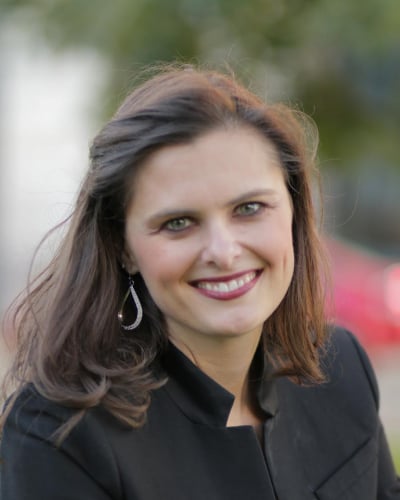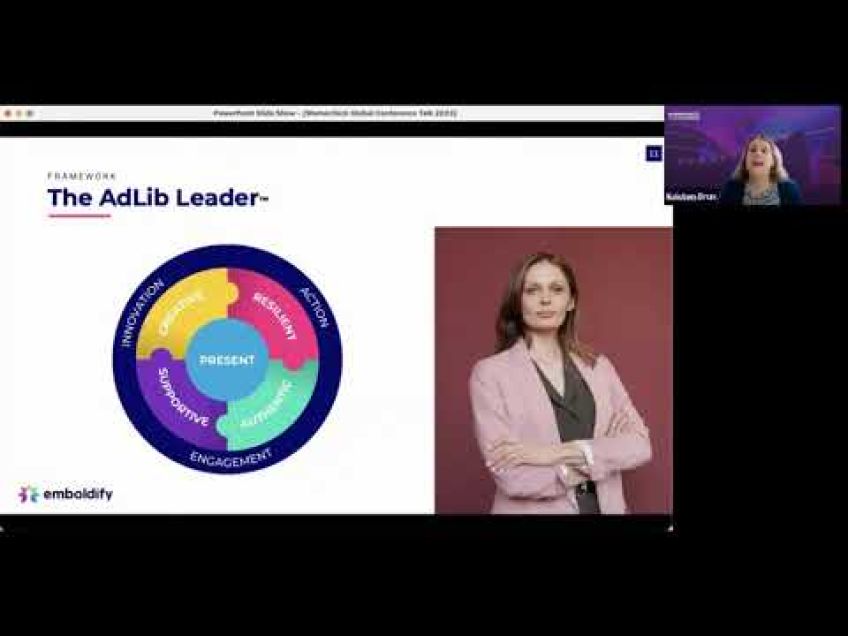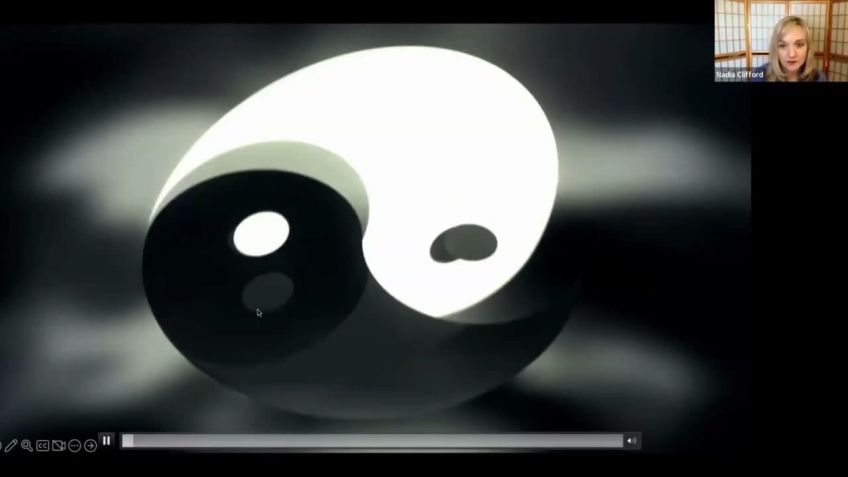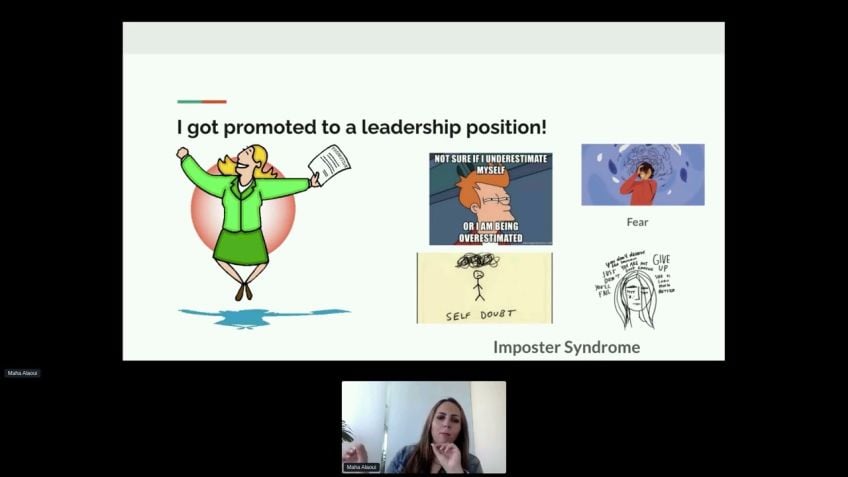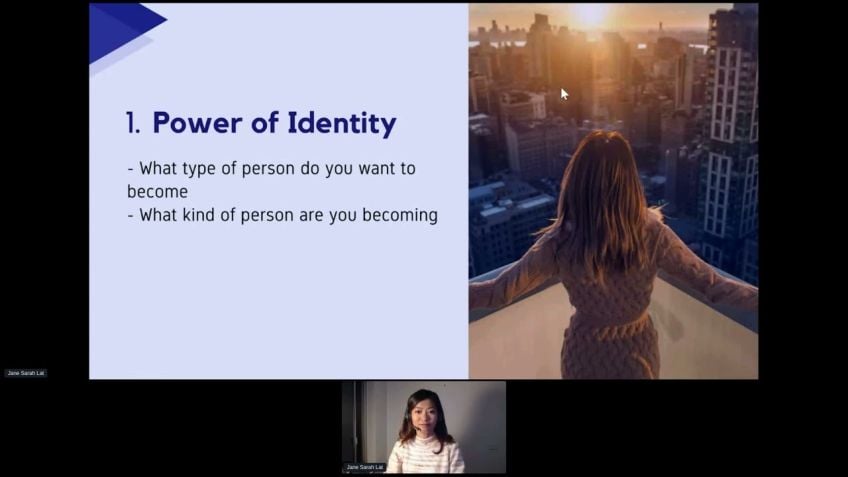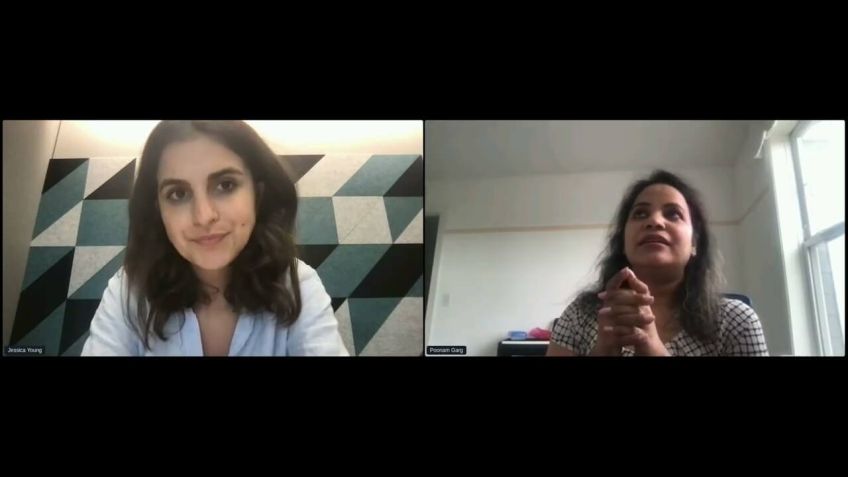Everyday Mindfulness Creating Calm in Chaos
Holly Duckworth
CEOIntroduction to Everyday Mindfulness: Creating Calm in the Chaos
Hello! I'm Holly Duckworth, executive director of the American Mindfulness Association. It's my honor to deliver this session on Everyday Mindfulness: Creating Calm in the Chaos for women working in technology. Today, I invite you to take a journey with me, adopting mindfulness to balance the constant pressure to succeed both at home and work in an era marked by a culture of bigger, better, faster, and more.
Do you have time for wellness or illness?
Living in a post-pandemic period, it's important that we realize being mindful is no longer a luxury, but an essential skill to cope with the demands of our 24/7 world. And what exactly is mindfulness? As John Cabot Zin, the founder of modern mindfulness, suggests it is the attention that arises through paying attention purposefully, non judgmentally in the moment. That's just to say, mindfulness is the practice of being fully present without judgment.
Mindfulness Myths Versus Reality
Some common myths around mindfulness include:
- Mindfulness requires us to be spiritual or religious - Not true, mindfulness has evolved into a practice that anyone can partake in, regardless of religious or spiritual beliefs.
- Mindfulness takes a lot of time - Untrue, mindfulness can be practiced in a minute or less.
- Mindfulness is about clearing your mind - No, mindfulness is all about being fully present, not about sweeping your mind clean of thoughts.
- There's no science to back up mindfulness - Actually, numerous research studies, including those conducted by American Psychological Association and National Institutes of Health, validate the positive effects of mindfulness.
The Power of Mindfulness in the Workplace
Top-tier companies like Google, Deutsche Bank, HBO, and many more are integrating mindfulness programs in their organizational culture. If your organization needs to improve employee well-being, productivity, and work-life balance, the introduction of mindfulness practices can be a game-changer.
The Different Faces of Mindfulness
Mindfulness comes in various shapes and forms that can be adapted to any lifestyle or work environment:
- Mindful Movement - Practice mindfulness as you move throughout your day, whether you're taking a walk or commuting.
- Mindful Technology Use - Are you in control of your technology, or is it controlling you? Think about it.
- Setting Intentions - Each day, ask yourself, "What is my intention for this day?". Ensure your intentions align with your desired outcome.
A Mindful Meditation Practice
Let's practice some mindfulness right now with a brief Bodyscan Meditation. This practice involves scanning your body from the tips of your toes to the top of your head, releasing any tension and inviting positivity and calmness in as you breathe. The goal is to be fully present in this moment and let go of any judgment. It's a practice, not perfection that counts. Find a way that works for you.
Conclusion: The Power of Mindfulness
Remember, mindfulness isn't a mere trend or fad; rather, it's a tool based on neuroscience that brings focus, productivity, and presence to our work and home life. So, next time you feel overwhelmed, remember to practice mindfulness, breathe, and be fully present. It's an incredible gift you can give yourself in our hectic world.
Thanks for joining me today. Should you have queries about mindfulness or infusing it into your workplaces, feel free to reach out to me on Linkedin. I'm Holly Duckworth from Denver, Colorado, and I'm here to share more tips and tricks on mindfulness.
Video Transcription
Hello. Good morning. Good afternoon. Good evening. Wherever you are joining this Woman tech session from Hello, my name is Holly Duckworth and it is my great honor and privilege to be the executive director for the American Mindfulness Association.So as we begin this brief session, this time, we have together, I wanna invite us to start like they start a lot of sessions with mindfulness. Whether this is your first session of the day or your last, just take a moment to mindfully bring our awareness of the breath moving in. I'm breathing out, allowing us to take a moment to feel our feet grounded on the floor, to feel ourselves it in the chair or the bench, the couch, right where you are? When was the last time you gave yourself the gift of being fully present? We live in a world today where we're constantly being pushed to think about the future or pulled back instead of the history of something we can no longer change. We live in a world of bigger, better, faster and more. We are constantly pressuring ourselves to succeed at home, succeed at work and maybe sometimes do even more than we can even think possible. Today's session is called everyday mindfulness, creating calm in the chaos.
I don't know about you, but since the pandemic, it feels like my life went from pause to fast forward. And yet we still only have the same 24 hours as a day as women in technology. It's important that we give ourselves a permission slip in this post pandemic era to become fully present. So I asked you as we have this section today. Are you making time for wellness or will you be forced to take time for illness? It's no longer a nice to have to be mindful but a necessary skill for us to work with the demands of this 24 7 world. So what exactly is mindfulness? Anyway, when I first started teaching and speaking on the topic of mindfulness, it was often a little misunderstood, maybe mindfulness was something you saw on a magazine show. But now mindfulness has truly gone mainstream. We have an invitation as women advancing careers in whatever aspect of the technology industry you're in the opportunity to really look at mindfulness as a key strategy for leadership success. Mindfulness is known most commonly by this definition or something very close to it.
This gentleman is called the founder of modern mindfulness. His name is John Cabot Zin. And his definition is that mindfulness is the attention that that it is the attention that rises through paying attention on purpose in the present moment, non judgmentally, that is a lot of words to say, mindfulness is the practice of being fully present in the moment without judgment.
So often we're judging ourselves before we even have the opportunity to activate our work life. We're not enough, we don't have enough time. We don't have enough resources. Maybe it's time for us to recognize that we can come at life from a place of non judgment. Doesn't have to be good, doesn't have to be great, doesn't have to be bad. But it can simply just be mindfulness as we work with it. At the American Mindfulness Association is really focused on mindfulness in the workplace. And I love this quote from Peter Bostelman. It's not a matter of if mindfulness will come, it will come. So oftentimes we have to address the myth and the misconceptions of what exactly is this word we call mindfulness. One of the top myths that I see is mindfulness requires us to be spiritual or religious. Maybe that's become a barrier for you to try mindfulness. The good news is with mindfulness going mainstream much like the word Amazon. You might remember that word Amazon was a place in the jungle. Now, mindfulness is a word that's changed and adapt and it's both a place in the jungle, but it's also that place we go to to shop online. Mindfulness is a word that kind of has two definitions and has evolved as well. So as it relates to workplace mindfulness. We remove any spiritual or religious connotations, focus on the secular nature and the neuroscience of it so that we can have those great results of increased focus, increased creativity, greater empathy and connection with one another. The next myth or misconception is that mindfulness takes a lot of time.
I wanna share with you on our short 20 minute session here today that mindfulness is something you can actually do. Just as simply as we started this session, the breath in and a breath out mindfulness can be done in one minute, maybe being fully present when you're washing your hands that next time you go to the sink. But yes, there's a place for a longer term mindfulness, but maybe in your workplace just giving yourself 30 seconds to breathe before a meeting 60 seconds to visualize that zoom call before it happens. Those are the powerful opportunities for let us to let go of a misconception and step into the positive outcomes that mindfulness can provide. I often hear from people that mindfulness is about clearing your mind. Oh my gosh, I have a a busy brain. I can't clear my mind and that can often be a barrier to entry for some. Perhaps that's not what mindfulness is about mindfulness is. Again about returning to that definition, being fully present within. I like to tell my private coaching clients that mindfulness is about being present.
So maybe you give that busy brain. Thank you. Let it go and come back to the fully, fully present into the moment rather than beating yourself up that you cannot clear your mind. Another great thing to think about is mindfulness is a practice. It's not a perfect. So there's no need to feel like you have to do it right or wrong, but find a way that works for you. The last misconception I hear often is that there's no science to back it up. And more than 15 years ago when I started teaching mindfulness, there was limited research. Now there's hundreds of mindfulness research and activities that are coming out each and every day from organizations like the American Psychological Association, the National Institutes of Health and even the American Medical Association saying that mindfulness as we reprogram, our brains allows us to be healthier and happier in our brain, in our heart and in the out picturing of our life.
So I'm not the only one talking about mindfulness. Many companies around the world are talking about mindfulness from HBO to Aetna Deutsche Bank, Procter and Gamble General mails, Google Walmart Moss, Adams Goldman Sachs. Perhaps even your company has a mindfulness initiative.
And I'd certainly invite you to utilize that chat box to share with us, maybe one or two companies that might have a mindfulness initiative in your organization. One of the most famous is that of Google where they founded what's called the Search inside yourself. Institute. This might be a place to start. They have a great book called The Search Inside Yourself by Chaman Tang. And I always like to invite you to pick up that book if this is a topic that you're specifically interested in. So mindfulness is a word that is kind of like an umbrella word for a variety of meditative or centering practices. And on your screen, there are seven mindfulness practices that we find are most effective in a secular neuroscience based workplace initiative, centering, examining your beliefs, using technology with mindfulness, setting your intention, creating a vision, mindful movement and gratitude.
I don't have time on today's session to go through all of them. But I thought I would share with you a couple of my favorite ways to apply mindfulness to let go of some of the chaos and choose calm each and every day, whether you're working from home or working in a more traditional office environment. My first one is the idea of mindful movement. It is said, when you move your body, you move your mind. And I would venture bet as women in technology, you spend a lot of time behind these screens. One way you can be mindful, come back to yourself is recognizing that mindfulness doesn't always have to be about sitting down. Maybe you're mindful in the way that you move. When's the last time you took a moment to be fully present, feel that heel and that toe, that heel and that toe as you perhaps walk from your desk to the next office next to you. Maybe you think about being mindful as you're moving. I'm sure many of you are mothers that are also busy driving Children from point A to point B I would venture a bit if I asked that you have gotten in your car driven across town, parked your car and not even remembered how you got there.
Maybe in fight mindfulness when you're driving your car. One of my favorite acronyms is a mindful acronym and it's the word stop, stop. No matter how we commute by train by car, by bike, we often come across something like a stop light or a stop sign. If you're gonna be mindful in your movement, give up opportunity to s stop speed. Take a moment to observe, look left, look right, look up, look down, oh, observe, look around and pe proceed, stop, stop, take a moment, observe and proceed. These mindful movement strategies don't require you to add moments of mindfulness, but just simply infuse it into the times that you're already spending. Another one. I couldn't resist talking to the women in tech about is let's be mindful with our technology. We often forget that we need to ask ourselves, do we run our technology or does our technology run us? And what you see there on your screen is a quick screenshot of my technology. I used to say, oh, you have to turn off your phones to be mindful, turn off your ipads. Well, that's not too much reality anymore. But again, I'd invite you to type in the chat box. Do you utilize one of these mindfulness apps or mindfulness devices? Headspace? Happier, calm insight, timer. These are all great ways to be in mindfulness with your technology and not work against it. And then of course, all of the seven I have laid out there, we talked a little bit about mindfulness while you move.
I also invited you to be mindful with your technology. But I wanna also invite you to one third mindfulness practice. And of the seven, it's probably my favorite. It's located there on the lower right of our screen. Fit your intention. This program today is based on a book called everyday mindfulness. Chaos. Become in a crazy world in the absence of taking time each day to say, how do I want to put my energy in motion? We might accidentally get caught up in negative motion or negative energies. So you're taking the time each day to ask yourself, what is my intention for this day? What is my intention for this day? Is it positive? Is it negative? Are you really truly committed to living a positive lifestyle? So again, I wanna invite you to utilize the chat box. I see there's about 20 of us here online. I ask you that question. What is your intention in one word? Would invite you to type that in the chat box because what you intend to do, you can often actualize. So if you don't have a word, maybe you take the first letter of your first name. My name is Holly and I would say my intention is to be happy. I invite you again to type into the chat box. What is your intention for living a more stress free, calm and focused lifestyle?
And as I invite you to type that into the chat box, I also wanted to not just talk about mindfulness today, but actually, if you're willing, oh Jen says, patience, Sarah says to be grounded, what a great gift to give yourself. So I wanted to invite us to actually have a moment of mindfulness. Perhaps we can do a short body scan meditation to allow us to invite a little bit of calm into our experience. And so we're just gonna invite you as we have this brief session together, take a moment to breathe in to breed out the center yourself. Take a moment and on the exhale, slowly release your breath as you scan down to your feet, allow yourself to feel your breath slowly release any sense of stress coming slowly to your toes. Perhaps you visualize the stress just is fully flowing out your toes back into the ground saying you word of intention. I am ground. Yeah. Now gently as you are ready and find another inhale and this in here, inhale that sense of patience and grounding back up through your shin, back up through your legs, you back gently through your chest.
The inhaling up into your shoulders, shoulders can often be a place that we carry stress and overwhelm. Give your shoulders and your neck, permission to relax gently. Coming back in to your heart center, come back in to this meeting room with this newfound sense that your mindfulness matters and that you can be a gift into the world. Mindfulness is the practice of being fully present in the moment. And it is the gift that you give at home and at work. Because as we re if we remember, if we don't care, take care of ourselves, the world invite us to take care of ourselves in illness and it is truly our wellness that matters most of all. So again, I invite you to turn your attention to the chat box. You do you have any questions about mindfulness and specifically infusing mindfulness into your workplace? Feel free to type them in the chat box. Remembering that mindfulness is neuroscience based. It is secular and it is something that you can do with yourself and with your team to increase focus, productivity and presence at home. And at work, it's been my great pleasure to be with you. I invite you to find me on linkedin. My name is Ali Duckworth. I'm in Denver, Colorado and it would be my great honor. To share with you more tips and tricks on how to be more mindful. Thank you for being with us. Enjoy your next session.

